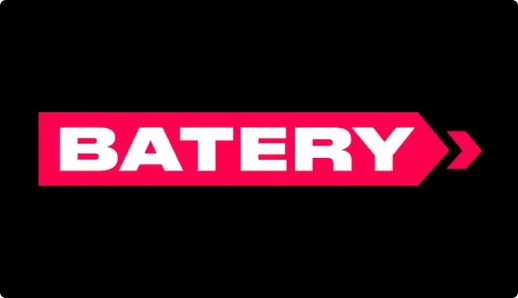Most asked Civil Engineering Interview Questions and Answers
Almost all companies hire the civil engineer’s candidate for the construction work first they will examine you and when you go for the civil engineering interview at that time the interviewer will ask you a couple of question for the position first. You should be aware from the basic question.

There are some top civil engineering interview question and answers which interviewer can be asked at that time. The question and their answers are given below.
Top 50 Civil Engineering Interview Questions and Answers:
In this article we will discuss 50 top civil engineering interview question and answers. The question that interviewer may ask are given below:
Q: What is civil engineering?
Ans: It is a professional engineering discipline that deals with the construction, design and maintenance of the built environment, including public works for example roads, dams, bridges, buildings, canals, airports, sewerage systems, pipes and railways etc.
Q: What are the different departments of civil engineering?
Ans: The departments of civil engineering are given:
- Structural engineering
- Geotechnical engineering
- Environmental engineering
- Water resource engineering
- Material science engineering
- Coastal engineering
- Transportation engineering
- Urban infrastructure
- Construction management
- Architectural engineering
- Railway engineering
- Fluid Mechanical
Q: Which softwares are used in civil engineering?
Ans: The software used in civil engineering are:
- AutoCAD
- 3DS max
- Prime Vera
- SAP 2000
- Microsoft project (word, Excel, PowerPoint etc.)
- Storm CAD
- Revit
- Eagle point
- ETABS
- MX Road
Q: Please tell us the formula for calculating the unit weight of steel?
Ans: D2 / 162.162
Q: Difference between concrete and mortar?
Ans: The difference between concrete and mortar are:
| Concrete | Mortar |
| It is mixture of cement, fine aggregate, coarse aggregate and water. | It is the mixture of cement, fine aggregate and water. |
| It is a complete building material and used in the construction of foundations, walls, beams & slabs etc. | It is a bonding material & used as a glue between bricks & blocks. |
| It is used alone for construction of beams, slabs & foundations etc. | It can’t be used alone |
| Concrete cant be for filling the gaps. | Mortar can be used for filling the gaps because of absence of coarse aggregate (gravel) and presence of water and cement, sand. |
| The strength of concrete is greater than mortar | The strength of mortar is less than concrete |
| The estimation of concrete in construction is different from mortar. | The estimation of mortar in construction is different from concrete. |
| Concrete is used in slabs, columns, retaining wall, piles, pier caps, foundations, ramps etc. | Mortar is used in masonry work, plastering, filling, floor leveling, and repairing damage structures made of concrete. |
| Most of the properties of concrete that are better than mortar is durability, permeability, compressive strength and lack of cracks etc. | The mortar does not have better durability, permeability, compressive strength and lack of cracks etc. |
Q: What is slump test?
Ans: On construction site the slump test is used to measure the workability of concrete & it is measured by using a slump cone. On site, for high slump value, the water-cement ratio must be high. While for low slump value, the water-cement ratio is low.
Q: Please tell us about workability of concrete?
Ans: Workability means the ease of placing and compacting concrete. Water cement ratio is directly proportional to the workability and inversely proportional to their strength.
Q: What is the density of steel?
Ans: The density of steel is 7850 Kg / m3.
Q: What is unit weight of cement?
Ans: The unit weight of cement is 145 lb / ft3.
Q: Please tell us about beam?
Ans: Beam is a structural member used to resist the applied load. Generally, beam is used to resist the shear force, vertical load and bending moment. Beam is horizontal element which is imposed on end points between walls, columns, pillars, foundations etc. In the past, beams were square, timber, metals, stone combination of timber and metal for example filth beam. Beams are used to carry vertical load. Beam is a flexible member which can resist the compression and tension force.
Q: What is column?
Ans: Column is a structural member which transmits the load of structure to the footing and soil. In other words, column is a compressive member that is constructed from concrete, reinforcement concrete, bricks and blocks etc. It is used to support beam or arches where the slab or ceiling rest. It can be of many shapes such as rectangular, square, circular, hexagonal, octagonal etc. The column is arising from the base and rest on the foundation. It can be constructed of masonry or steel. It is design to resist the lateral force and for the purpose of wind or earth quack. A column might be used for decorative purpose.
Q: What is minimum number of bars used in circular column?
Ans: There can be a minimum of six 6 bars used in circular column.
Q: Please tell what is absorption of brick?
Ans: Bricks should not absorb more than 20 % of water, when it is immersed in water for at least one day or 24 hours.
Q: Can water damage concrete?
Ans: Yes! Water can damage concrete. The defects that water induced in concrete are given below:
- Water reduces the strength of concrete.
- Water reduces the permeability for further water seepage.
- It reduces the durability.
Q: Difference between QA and QC?
Ans: QA stands for quality assurance, the activities designed to confirm that the development process and maintenance process is good to confirm a system will meet its objective.
QC stands for quality control, the activities designed to evaluate a developed work product.
Q: Does brick grow every year?
Ans: No! the bricks do not grow every year. It grows because of the stuff that gets all over the bricks. that’s why its look like it grows every year.
Q: Tell us about the purpose of gap in the road on the bridge?
Ans: When temperature changes, it contract or expand. In winter it contracts while in summer it expands. These contract and expand results to damage or deformation to the road.
Q: What is honey comb in concrete?
Ans: Honey comb is actually the voids or air pocks in concrete.
Q: What is the distance between railway tracks?
Ans: The distance between railway track is 4 feet.
Q: Why the pressure increases under soil?
Ans: Soil pressure increases because of its self–weight. The pressure of soil is directly proportional to the depth of soil.
Q: Name the structures which is subjected to the fatigue?
Ans: The structures which is subjected to the fatigue are:
- Bridges
- Hydraulic presses
- Burner trains
Q: What is gravity flow?
Ans: When the fluid is flowing due to the force gravity but not on applied pressure is known as gravity flow.
Q: What is Kip?
Ans: 1 Kip is equal to 1000 ponds.
Q: What is aggregate?
Ans: The composite material used to resist the compressive stress. Aggregates are classified in two main types:
- Fine Aggregate
- Coarse Aggregate
Q: Please tell us about soil reinforcement?
Ans: Soil reinforcement are used to improve soil strength and have ability to support more load.
Q: What is world largest concrete dam?
Ans: The world largest concrete dam is Grand coulee dam.
Q: Please tell the tallest man made structure?
Ans: The tallest man made structure is Burj ul khalifa. The height of burj ul khalifa is 828 meter.
Q: Which units are used for the measurement of concrete?
Ans: Cubic meter (m3), cubic foot (ft3), cubic yard (y3).
Q: What are the causes of building collapse?
Ans: The causes of building collapse are:
- Weak foundation
- Passage of time
- Demolition
- Bombing
- Natural disaster
Q: What is the final setting time of concrete?
Ans: The final setting time of ordinary concrete is 10 hours.
Q: What is initial setting rime of concrete?
Ans: The initial setting time of ordinary concrete is 30 minutes.
Q: Please tell us about the types of beam?
Ans: The types of beam base on supports are:
- Simply supported beam
- Continuous beam
- Over hanging beam
- Double over hanging
- Cantilever beam
- Fixed beam
- Trussed beam
Q: Please tell us about the types of load?
Ans: The types of load are:
- dead load
- live load
- snow load
- impact load
- Wind load
- Earth quack
- Environmental load
Q: What is minimum number of bars used in rectangular or square column?
Ans: 8 Eight minimum number of bars can be used in rectangular or square column.
Q: What is minimum grade of concrete used in RCC work?
Ans: The minimum M20 grade of concrete is used in RCC Work.
Q: What is the size of brick?
Ans: The standard size of this brick is 19 x 9 x 9 cm.
Q: What are the numbers of brick required per 1 cubic meter (m3)?
Ans: 1 cubic meter (m3) contains 500 numbers of brick.
read more about: Calculation of Bricks & Blocks in a Wall
Q: Who designed the city of Washington Dc?
Ans: Pierre L’ enfant designed the city of Washington DC.
Q: Please tell us how long concrete takes to harden?
Ans: Concrete takes 28 days to cure and gain 85% of strength.
Q: How many pyramid in Egypt?
Ans: There are 80 pyramids in Egypt.
Q: How do you calculate the volume air flow?
Ans: Orifice meter is used to measure the air flow.
Q: How many square feet are in square yard?
Ans: There are 9 nine square feet in a one 1 square yard.
Q: What are the strongest shape in building?
Ans: The strongest shape in building is pillars.
Q: What are the different types of slump test?
Ans: The different types of slump test are:
- Shear slump
- True slump
- Collapse slump
Q: What is mean reinforcement concrete?
Ans: Reinforcement concrete means the composition concrete (cement, fine aggregate, and coarse aggregate) and steel is known as reinforcement of concrete.
Q: What is DPC stands for?
Ans: DPC stands for damp proof coarse
Q: How many bricks are there in 100 cft?
Ans: There are 1350 number of bricks in 100 cft
you may also read:
- Important Thumb Rules used in Construction by Civil Engineers
- Water Cement Ratio
- What is Cement and Types of Cement
 All About Engineering A Very useful blog about Engineering
All About Engineering A Very useful blog about Engineering






